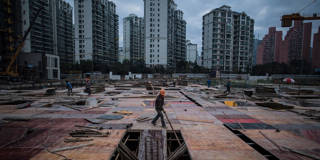An overly indebted Chinese economy cannot afford to roll out a massive stimulus, even when confronting the possibility of a full-blown property-market crisis. China thus faces a much slower growth trajectory for the foreseeable future, unless policymakers can successfully implement consumer-led rebalancing.
NEW HAVEN – Economist Min Zhu, speaking at a World Economic Forum panel in China in late June, was among the first to hint at China’s underwhelming post-COVID policy stimulus. Zhu, a former deputy managing director of the International Monetary Fund, as well as a former deputy governor of the People’s Bank of China (PBOC), is no casual observer of the Chinese economy and its role in the world. He is also one of my oldest and wisest friends in China, and I have learned to take his views very seriously.

NEW HAVEN – Economist Min Zhu, speaking at a World Economic Forum panel in China in late June, was among the first to hint at China’s underwhelming post-COVID policy stimulus. Zhu, a former deputy managing director of the International Monetary Fund, as well as a former deputy governor of the People’s Bank of China (PBOC), is no casual observer of the Chinese economy and its role in the world. He is also one of my oldest and wisest friends in China, and I have learned to take his views very seriously.